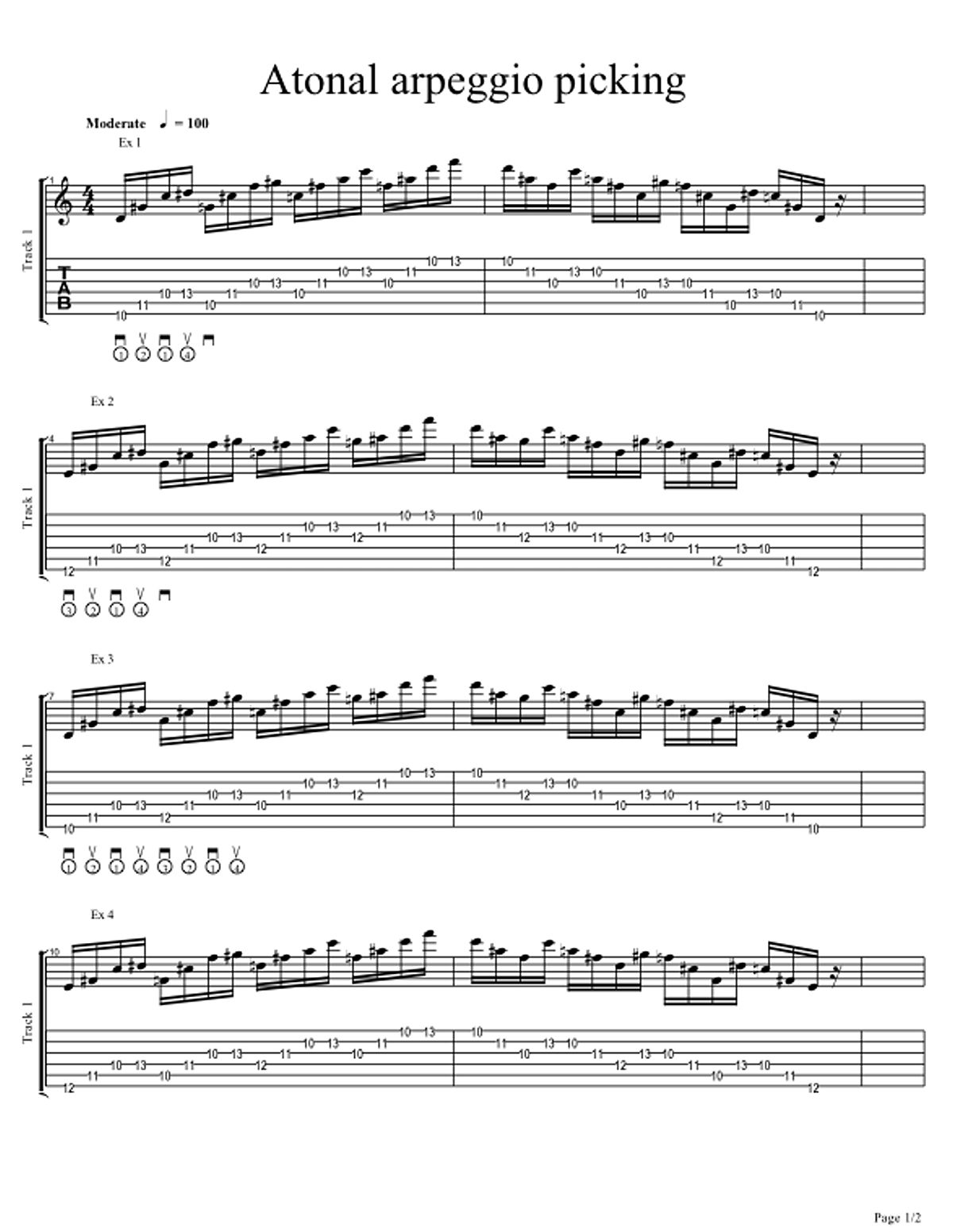I'm sure that when you'll read the title of this lesson you might think that this is a space ship's gear box or something, but I can assure you that's it's a very unique lesson and the title is quite self explanatory! Let's explore!
The alternate picking of arpeggios can be a very tough technique to master. The main reason for this is the lack of coordination between the two hands. You'll have the picking hand doing only two movements, i.e. down up down up all the way, but the fretting hand will have to finger all the different shapes and keep up with them while changing over and over! So to minimize this I created these atonal shapes. The word atonal means that there isn't any fixed key centre. Just shapes repeated on different groups of strings. The reason behind this is so that your concentration is focused on one to two hand shapes only while you alternate pick. When you start playing Example 1 you'll realize that in no time the fretting hand will 'memorize' the movements and starts moving faster and smoother. The reason is because repetition is enforced here. Usually arpeggios are taught diatonically (relating to a tonal centre) and that gives you much more shapes to focus on. Example 2 changes a bit the previous shape. Then I mixed them up so that you can test your dexterity! Remember to keep the thumb parallel with the second finger at the back of the neck and relaxed. That's very important if you wish to develop a great flexible arm.
You can move the shapes all over the neck and move them diagonally too. It's really up to you to mix and match and explore! The most important thing is that you're coordinating both the hands and not missing a note. Be sure that you're holding the pick smoothly and that only a little edge can be seen. I would go for the elbow picking motion with the wrist kept rigid if you wish to create some really fast speed bursts. Wrist picking can be great to play certain passages on guitar but I don't see it the 'best choice' for this type of playing. But do try them both .Most importantly, alternate pick only. Be sure to mute any unwanted sound(s) if you're using an overdriven sound.
If you like the sound you're hearing you can incorporate them into your playing ideas if you wish to 'add' color and tension to your solos. You can start and finish on the same root (like the examples) and have that same root play a power chord in the rhythm. That can sound very cool. What's important here is that you'll get both hands moving smoothly up and down the neck. Then when you'll go back to your diatonic stuff you'll be amazed how your coordination has improved. Remember that when you zoom in and focus on your technique you'll be building up perfect practice - which leads to perfect playing!
Just think a bit on that!


Jean-Pierre Zammit is a guitarist and instructor from Malta who has been playing guitar since the age of 14.
Zammit uses complex techniques, time shifts and scales in his writing, and always puts the song and the message he wants to portray first.
His is endorsed by Music Man guitars to use their Axis BFR models and Ernie Ball strings.